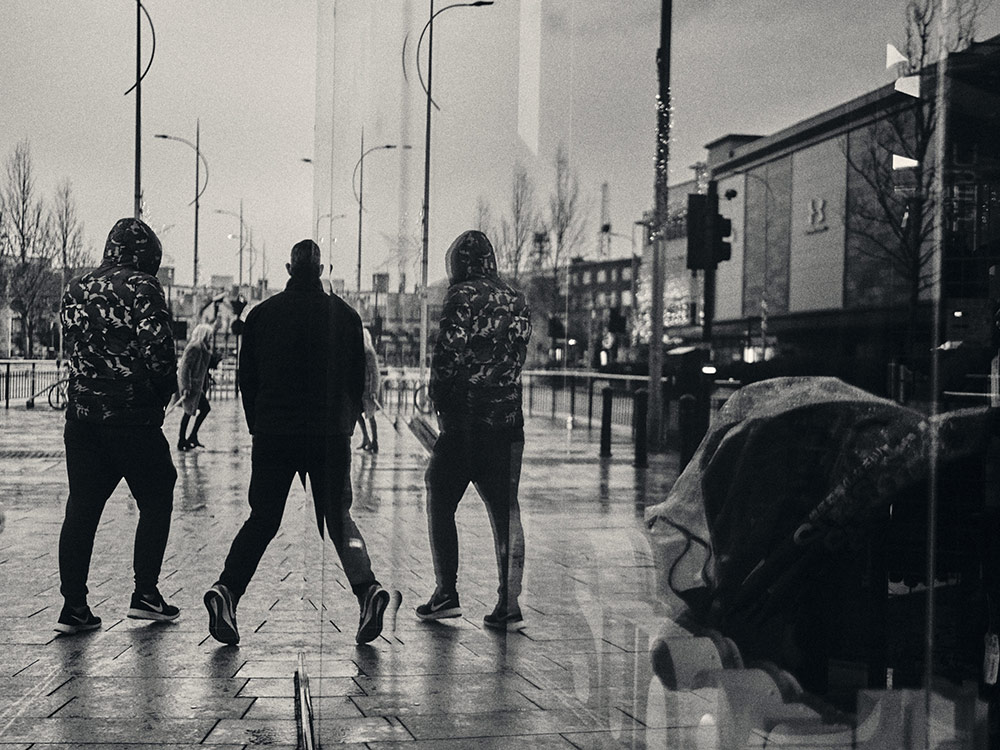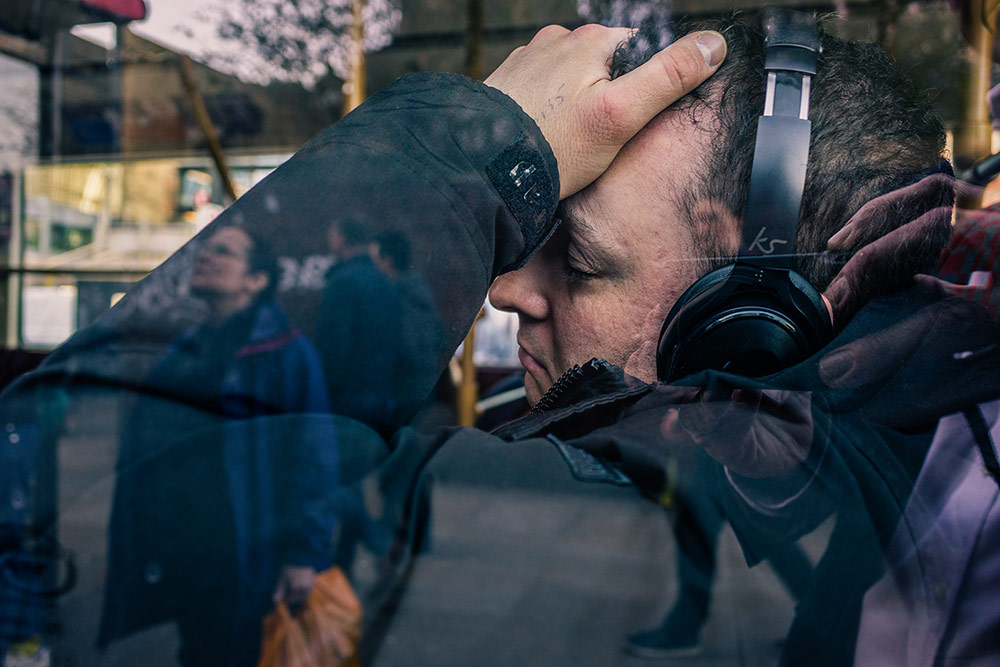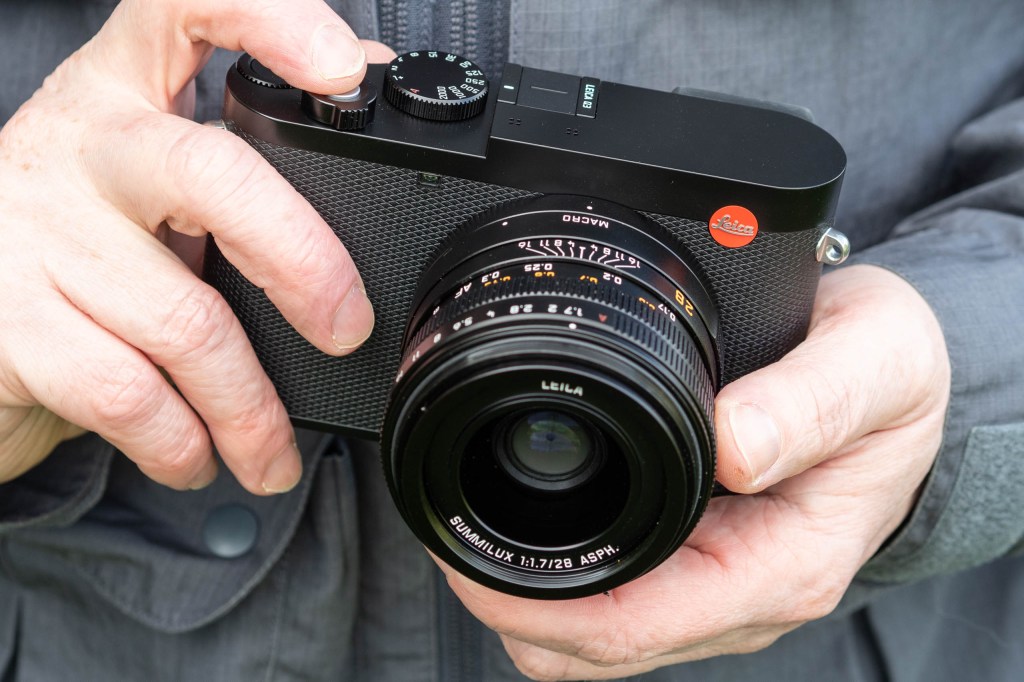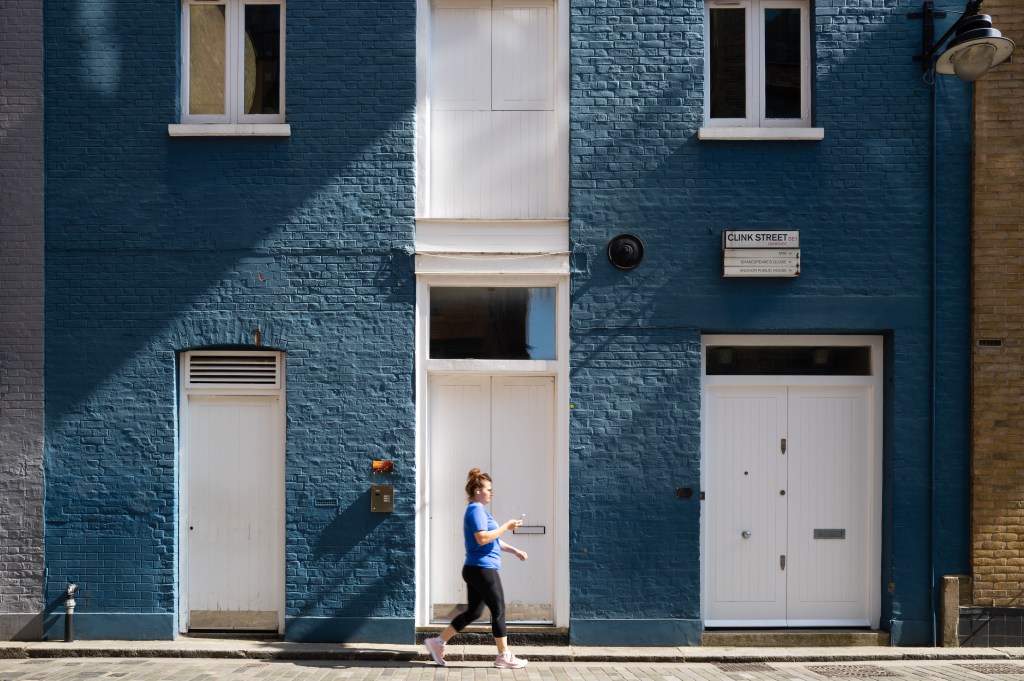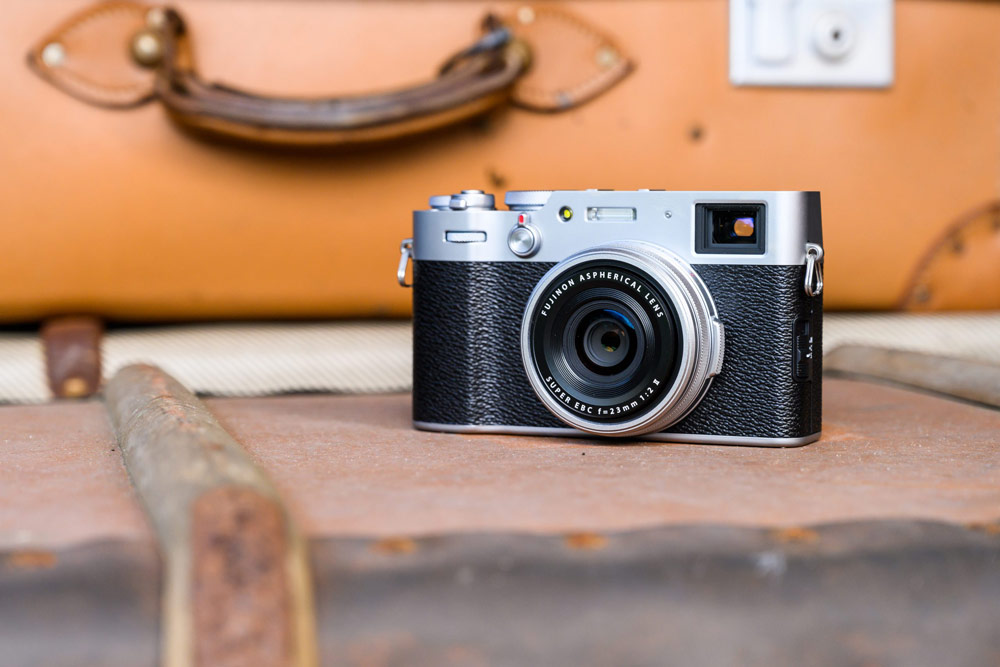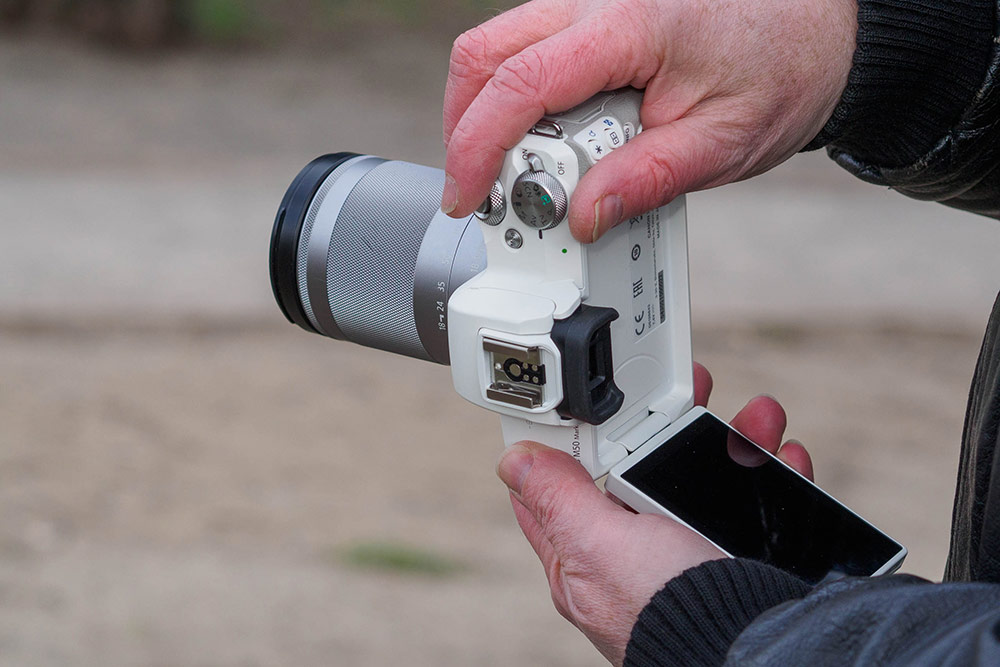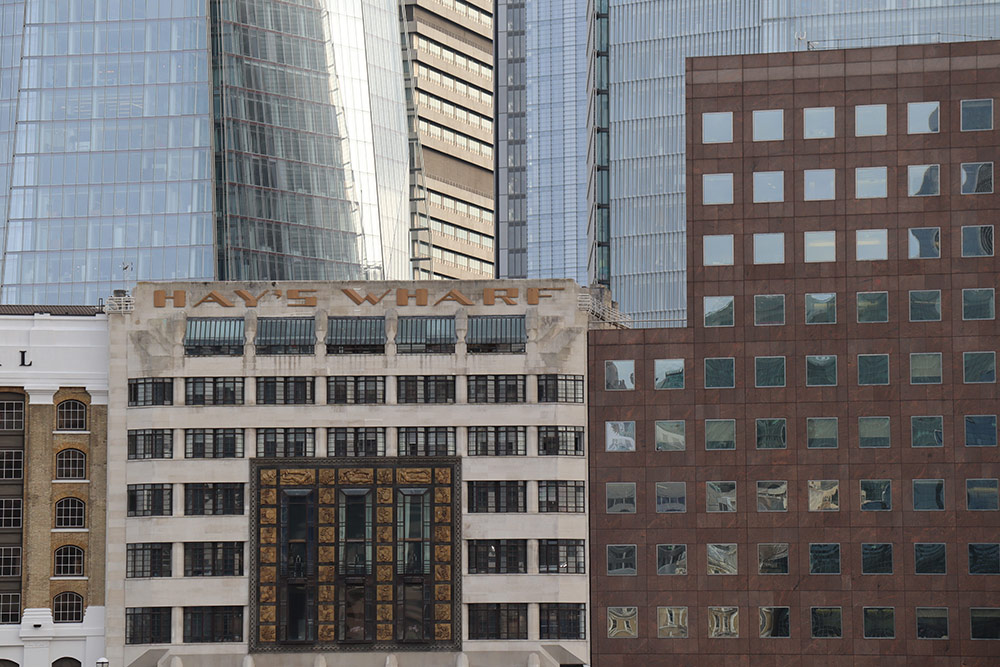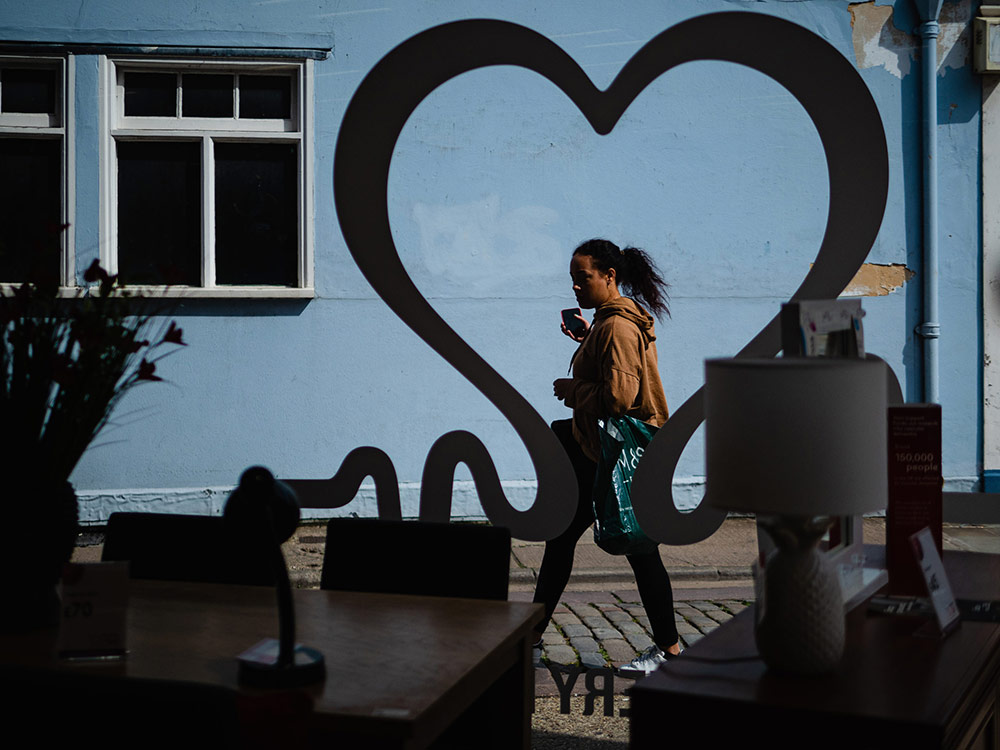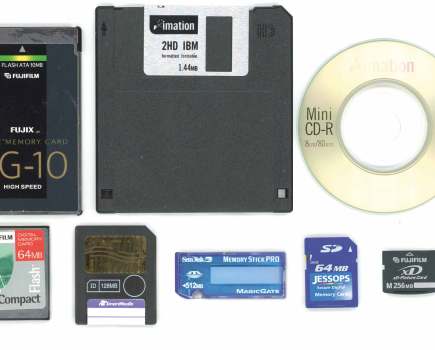The best camera for street photography needs to be several things at once. Fast – to acquire focus and capture shots smoothly, as street photography is all about the moment. It should be unobtrusive so that you, as photographer, are a discreet observer of the urban drama unfolding before you – a hefty SLR with a giant telephoto lens will more likely make you the main attraction! A street camera should also be comfortable to hold, simple to use, and able to deliver clean, sharp pictures consistently. There are some great accessories to enhance these urban ventures, too.
I’ve shot street pictures with smartphones, digital compacts, vintage film cameras, DSLRs and more. Like many of the AP team, almost every camera I’ve tested has been used in some form of urban photography – which was effectively the research behind our formation of this list. The cameras that follow are a mix of ones I’ve tested, and models endorsed by other members of the team.
You can scroll to the bottom of this page for a more detailed breakdown of how the team and I made our choices, including explanations of the key criteria behind them. For now, read on for our suggestions of the finest street photography cameras we’ve ever used.
Get straight to the point with our quick list of the best cameras for street photography:
- Panasonic Lumix DMC-GX9 – Buy now
- Ricoh GR III – Buy now
- Leica Q3 – Buy now
- Fujifilm X100V – Buy now
- Canon EOS M50 Mark II – Buy now
- Olympus OM-D E-M10 Mark IV – Buy now
Want to know more? Read on as we run through the full specs of every camera on our list…
Panasonic Lumix DMC-GX9
Amateur Photographer verdict
Small size and agile functions – AF area size and position are quickly adjustable and optimal, making this highly adept for urban photography.- Quiet shutter allows discreet shooting
- In-body stabilisation gives sharp results with every lens
- Great touch screen and functions
- Compact form and design
- Awkward default control setup for viewfinder shooting
- 16:9 viewfinder is a poor match to sensor
Panasonic Lumix DMC-GX9 – at a glance
- Sensor: 20.3MP MOS Sensor
- Viewfinder: flip-up Live View EVF, 2,760k dot, 0.7x (equiv.), 100%
- Screen: 3-inch, 1,240k dot, tiltable TFT LCD
- ISO range: 100-25,600 (extended)
- Weight: 450g
- Price: from $600 inc. lens / £550
Launched at the beginning of 2018, the Panasonic Lumix GX9 may well be the oldest camera in this group, yet still holds its own with a number of special features. The rangefinder style trims off protruding parts, so it remains compact and easy to fit in a coat pocket or a small bag, and, despite a nice solid build that withstands drops and scrapes, it weighs only 450g.
Although not fitted with the same 20MP sensor as is used in the top-of-the-line Lumix G9, the Lumix GX9 produces excellent image quality, plenty of dynamic range, nice colour and is capable of recording a lot of fine detail. RAW files are excellent, and JPEG users will enjoy plenty of control.
The collapsible kit lens is handy and surprisingly sharp, but designed to a price that doesn’t make the most of the camera’s AF system. Street photographers might consider the Leica DG 25mm f/1.4 or the Leica DG 15mm f/1.7 as alternatives that will bring out the best in the camera and still keep it very small.
Built-in stabilisation helps in street photography – not so much for compensating for the wobble of long lenses as much as for controlling camera-shake in low light conditions without having to crank the ISO too far. The stabilisation is very effective (though the four stops of compensation is a little short of the very latest models), and when combined with a fast aperture lens, it’s surprising how good results can be achieved in very dim conditions.
The rear screen flips up and down, which is less useful for uprights than for horizontal compositions, but it is bright, clear and almost always easy to see. The EVF is housed in a hinged chimney affair that also flips up so we can look down into it while shooting at right angles – like a waist-level finder. The viewfinder experience though is only average, and I almost never use it.
Standout feature: Touch Shutter
The highlight of this camera for street photographers is the quality of the touch screen and touch functions. Users can very quickly adjust the size and position of the AF area, and by touching the screen can focus and trigger the shutter at the same moment.
This feature is becoming more common in other cameras, but few I’ve used can compete for the speed of reaction that this little camera manages when fitted with a good lens. The quality of this feature is one of the main reasons I still use the GX9 as my principal street camera – it allows me to get pictures that would otherwise be impossible.
Read our Panasonic Lumix DC-GX9 Review
Also consider:
Ricoh GR III
Amateur Photographer verdict
Top class images, fast and accurate AF, and benefits from Ricoh’s uniquely excellent Snap Focus.- Excellent image quality
- Effective Snap Focus
- Superb AF system
- No viewfinder
Ricoh GR III – at a glance
- Sensor: 24.2MP APS-C Sensor
- Viewfinder: optional GV-1 (£149), GV-2 (£199) available
- Screen: 3-inch, 1,037k-dot fixed LCD touchscreen
- ISO range: 100-102,400
- Weight: 257g
- Price: $967 / £949
I’m not alone being a big fan of the Ricoh GR series that followed the original GR1 film camera; one of which I still have. The series has been legendary in the street and travel photography communities for very good reasons: compact dimensions, rugged build and outstanding lens quality. For me the series went a little off the boil in the early digital days, but the GR III certainly recovers that lost ground, and is an excellent performer.
The key attraction has been the combination of a truly compact camera and first rate images; the latest version delivers on both. The wide-angle lens (28mm equivalent) might seem a little tricky for street work, but the size of the camera allows us to use it in really close proximity to people in the street without drawing attention – ideal for crowded places. This model has an updated AF system that is very quick and accurate, and the combined efforts of the sensor and the optics give very sharp and detailed images.
It’s worth noting that there is no viewfinder at all with this camera; and that the rear screen, necessary for live view, is fixed in position. This rather limits the range of angles we can shoot from easily, but the screen is of good quality and offers a clear view even when not directly in front of your face. A couple of accessory viewfinders are available, including one that matches a wide-angle converter. They may look cool, but are hefty kit and are, frankly, unnecessary.
Also, don’t forget that in 2021 Ricoh added the GR IIIx, which has a 40mm equivalent f/2.8 lens: that model is perhaps better suited to macro and portraits than the wide angle GR III.
Standout feature: Snap Focus
I don’t use “snaps” to describe photos. Serious photographers may wince at hearing their pictures referred to as such… But Snap Focus in the Ricoh GR series is a different kettle of fish: a very basic idea that allows us to set a focus distance manually for the camera to work to. This allows for a reduction in the delay between pressing the shutter and picture capture.
A neat depth-of-field scale on-screen shows how the aperture in use combines with the Snap Focus distance to show the distance range of what will appear sharp in the final image. With these parameters set we can shoot anything within that range and know it will be focused. This makes off-centre subjects much easier to shoot as the camera’s AF system doesn’t need to find them and then focus – it just shoots.
Also consider:
Leica Q3
Amateur Photographer verdict
A superlative camera that is well-adapted for street photography – if you keep your wits about you, given its price.- Superb AF & manual focusing
- Excellent viewfinder
- Robust
- Beautiful to use
- Exorbitant price
Leica Q3 – at a glance
- Sensor: 60.3MP full-frame sensor
- Viewfinder: 5.76m-dot, 0.76x EVF
- Screen: 3in, 1.84m-dot tilting screen
- ISO range: ISO 50-100,000
- Weight: 743g
- Price: $6,295 / £5,300
This is, of course, not a viable option for everybody. Leica are firmly in the business of premium, high-end luxury cameras, and a Q3 is a huge investment for any camera, never mind a fixed-lens compact. However, by combining a full-frame sensor with a fixed prime lens, the Leica Q series represents something unique (Sony and Zeiss have tried this combination, but only Leica has been able to stick it out).
The Leica Q2 was an utterly sublime compact, to the point where we wondered if Leica would even bother making a successor – the formula was so perfectly distilled there didn’t seem to be much room for improvement. But the Leica Q3, when it did arrive, put the kibosh on that notion.
With a higher-resolution 60.3MP full-frame sensor, a new tilting screen and an upgraded autofocus system, it’s a much more potent and versatile camera than any previous Q model – and all its various strengths make it a perfect tool for street photography.
Once again, the fixed Summilux 28mm f/1.7 ASPH lens is optically stabilised, and in a clever touch, the camera will only activate it when it detects a slow enough shutter speed is being used to warrant its use. It’s effective enough to allow for sharp shots at shutter speeds as slow as 1/6sec.
This combines beautifully with the large aperture and the Q3’s excellent high-ISO performance to make it a fearsome proposition for low-light shooting. Street photographers looking to get moody evening and night-time shots will be in heaven with this camera.
Then there’s the sensor. We had seen the 60MP full-frame BSI-CMOS sensor introduced on the Leica M11 rangefinder. The headline resolution is certainly nice, but you probably won’t actually want to be shooting 60MP files all the time, particularly if working in RAW (where the Q3 really shows its strength). Instead, you’ll likely want to make use of the 36MP and 18MP modes (both of which are more than enough to make a good print), as well as the Digital Zoom that makes use of in-camera cropping, with 35mm, 50mm, 75mm and 90mm equivalent options.
Standout feature: Premium focusing experience
As mentioned, the autofocus on the Leica Q3 has received a serious upgrade. The sensor now has phase-detection pixels, making the system much faster to acquire focus. There are multiple focus area options to play with, as well as conventional tracking modes. However, there’s also the AI-powered subject-recognition system. The Leica Q3 recognises human subjects and can lock focus onto them, which is a tremendous boon for street photography; reducing the chance of missing a fleeting opportunity due to slow focusing.
For those who keep things old-school, the manual focusing system is a genuine delight. It’s quick to activate, and the response of the focusing ring feels just right despite its electronic, rather than manual operation. With an option for magnified view and a focus peaking display, the Q3 makes it pretty much as easy as it could possibly be to nail focusing accuracy when shooting manually.
The Leica Q3 is a sublime camera – and it commands a dizzying price. For the even more hardcore, consider the Leica Q2 Monochrom, a variant of the previous model in this serious that only shoots black & white images (a Q3 Monochrom is likely on the cards, but hasn’t appeared yet).
Also consider:
- Leica Q2 Monochrom
- Any Leica rangefinder, such as the Leica M11
Fujifilm X100V
Amateur Photographer verdict
This superb fixed lens camera is packed with useful features, yet is very easy to use.- Unique hybrid viewfinder
- Great to use
- Attractive retro design
- Robust
- Not weatherproof from the box
Fujifilm X100V – at a glance
- Sensor: 26.1MP APS-C X-Trans CMOS 4 sensor
- Hybrid viewfinder – Optical 0.52x magnification, 95% coverage; Electronic, 0.5-inch, 3.69m-dot OLED EVF
- Screen: 3-inch, 1.62-million-dot tilting touchscreen
- ISO range: 160-12,800 (extendable to 80-51,200)
- Weight: 478g (including battery and memory card)
- Price: $1,800 / £1,200 – £1,600
The whole Fujifilm X100 series has been a favourite with street photographers looking for a properly advanced compact camera. What you get in essence is a lot of the controls of the X-Pro and X-T cameras in a smallish body with a fixed lens. It’s not just any lens either, but a highly regarded lens with a nice wide aperture.
While the focal length of this lens is the same 35mm equivalent as that in the X100F it is definitely sharper across the frame and offers quite a lot more contrast – which makes it an even better choice than the, already very good, previous model.
Understandably, people are attracted to the way this camera looks, but it’s equally beautiful within. This model has both practical handling and good performance in abundance. Physical dials and buttons give the camera an air of simple operation, which it indeed has. But dive into the menu and you’ll see a host of controls, features and functions, as well as Fujifilm’s extensive collection of film simulation presets for JPEG shooters. Fuji is famous for its colour and monochrome looks, and consequently plenty of Fuji users don’t bother to shoot in RAW.
Standout feature: Hybrid viewfinder
One of the highlights of the X100 series is the hybrid viewfinder that the cameras share with the X-Pro series. This comprises what looks like a regular optical viewfinder, which can be turned into a full digital electronic viewfinder at the flick of a switch. I say ‘looks like a regular optical viewfinder’ because it actually isn’t – the optical viewfinder has an information display overlaid on the scene, so we can see all the settings we’d see with an EVF but dropped onto a real-life view. This means you can combine the digital level with an optical view, which is important in the street as we want to get those buildings straight.
The optical viewfinder is great, but when you want to preview your exposure, white balance, depth-of-field and film simulation the lever on the front of the camera switches the finder to EVF mode and displays exactly all of those things. It’s not a new genius idea, but it is still thrilling – and no one else has thought to copy it. As someone who generally doesn’t use a viewfinder unless I have to, I am surprised by how enthused I am by this one.
If you can’t find the Fujifilm X100V, make sure you check out some of the X100V alternatives.
Read our Fujifilm X100V review
Also consider:
Canon EOS M50 Mark II
Amateur Photographer verdict
A great option in the lower price range, the Canon EOS M50 Mark ll has the all round attributes of a great camera for street photography, especially for starting out.- Dual Pixel AF is excellent
- Affordable
- Light weight
- Styling
Canon EOS M50 Mark II – at a glance
- Sensor: 24.1MP APS-C Dual Pixel CMOS sensor
- Viewfinder: 2.36m-dot OLED EVF
- Screen: 3-in fully articulated touchscreen
- ISO range: 100-25,600 (ISO 51,200 extended)
- Weight: 387g
- Price: $700 (generally with a lens) / £450 body only
The Canon EOS M cameras are not as stylish as many other models on this list – nor, for that matter, as capable. But the series remains enduringly popular for the simple reason that these APS-C mirrorless cameras get the job done well at an affordable price, and are easy to carry everywhere thanks to their lightweight construction.
The Canon EOS M50 II is the best one that’s ever been made – possibly the best one that ever will be made, considering how aggressively Canon is pushing the EOS R series as its mirrorless one-stop shop. Still, for now, the EOS M50 II is available, and cheap, and a solid choice for street photographers. It also features in our roundup of Best Canon mirrorless cameras.
A relatively cheap camera that’s designed to be good at a bit of everything, the EOS M50 Mark II manages to pack a lot into a body weighing just 387g. It handles nicely, with a generously sized EVF and a fully articulating touchscreen that can be set to any angle. And while EF-M lenses aren’t exactly numerous, they are at least compact, and you can build yourself a relatively slim setup that won’t attract attention on the street.
Image quality is generally very good, making the most of the APS-C sensor, and the snappy 7.4fps burst rate should stand you in good stead to capture fleeting moments. You can up that to 10fps with fixed focus if you’re feeling brave or have set up a shot. ISO-wise, the camera can manage up to 51,200, though you’re probably going to want to stick to 12,800 or so to make sure you get useable results.
Standout feature: Dual Pixel autofocus
Tried and tested, Canon’s Dual Pixel autofocus really is excellent. Using a combination of phase detection pixels on the sensor and a contrast-detect system, the EOS M50 II is set up to give you the best of both worlds. It also pairs well with the touch AF function on the LCD screen. Tot up the total number of AF points available, and you’ve got a whopping 3975 positions at your literal fingertips. That’s… yeah, it’s a lot.
It’s not going to match the AF systems on professional cameras, but for something at this price point, the EOS M50 II’s Dual Pixel autofocus excels. Any burgeoning street photographer will almost certainly be very happy with its performance.
As we mentioned the future of the EOS M series is uncertain, and we may not see much more from the series as the EOS R cameras eat up more and more of the limelight. But, while still available, this is an excellent, great-value camera for anyone in the early stages of their street photography journey.
Read our Canon EOS M50 Mark II review
Also consider:
Olympus OM-D E-M10 Mark IV
Amateur Photographer verdict
Sharp pictures, good colour and plenty of dynamic range. Great features for urban use, like the flip-up screen.- Highly effective in-body stabilisation
- Superb JPEG image quality
- Design adapted to urban use
- Not the most robust
Olympus OM-D E-M10 Mark IV – at a glance
- Sensor: 20.3MP Four Thirds sensor
- Viewfinder: 2.36m-dot, 0.62x magnification
- Screen: 3-inch, flip up/down, tilting touchscreen
- ISO range: 200-6400, ISO 80-25,600 (extended)
- Weight: 383g
- Price: $700 (with 14-42mm lens) / £649 (body only)
The E-M10 series is officially the beginner’s entry into the Olympus OM-D camera system, but as this model is now on its fourth incarnation, and has improved each time, there isn’t much it doesn’t do. The build is perhaps not as rugged as the OM System OM-1 / OM-5 series bodies, but with the care most enthusiasts take of their kit, I don’t suppose that will matter too much.
For the street photographer, the E-M10 IV provides a nice flip-up screen that slides away from the body when in the waist-level position, so there’s a very good angle of view without the viewfinder housing obscuring the display. The screen also flips down and below the camera so you can do selfies – though you might prefer to use this to take pictures over your shoulder.
The screen provides responsive touch-shutter, and a silent mode with electronic shutter gives us shutter speeds as short as 1/16,000sec. In-body image stabilisation steadies current as well as vintage and third party lenses, and high-drive settings make shooting at 15 frames a seconds possible for action sequences.
The camera’s AF system is snappy for still and slower moving subjects where tracking isn’t a priority, and image quality is very nice indeed – it delivers sharp pictures, good colour and plenty of dynamic range.
Aside from the quality of the body-build and the absolute sophistication of the AF system, the E-M10 IV doesn’t differ from the E-M5 and E-M1 series bodies in many ways of significant importance when it comes to street photography, so using this body instead of one higher up the range shouldn’t disadvantage you very much at all.
Standout feature: DSLR styling
Many photographers brought up on SLRs find it hard to shift away from that familiar body shape, and struggle to get to grips with compact cameras and smaller mirrorless models. The E-M10 IV offers something of a compromise, with its small and lightweight body, but at the same time provides a traditional right-hand grip and a viewfinder in the ‘right’ place. With your eye to the finder, which is electronic rather than optical (you can’t have everything the old way), all the main controls can be accessed with the fingers and thumbs of the shooting hand.
The gripped body makes working with longer lenses more comfortable if you are the sniping sort of street photographer, and the viewfinder makes seeing what is going on clearer for those who can’t get on with shooting via the rear screen. Even if you aren’t going to hold it to your eye, you will appreciate the new deeper grip that will make you feel more secure in your grasp of the camera.
Read our Olympus OM-D E-M10 Mark IV Review
Also consider:
How to choose a camera for street photography
So what’s the trick for a good street camera? Well, there isn’t a rule that encompasses everything, as evidenced by the thousands of terrific street pictures taken on cameras that these days would be considered impossibly slow and unwieldy. But all the same, a good modern camera will increase your reaction speed, your versatility and the sharpness of your shots.
Key factors to consider when choosing
A good street camera should be comfortable to hold, easy to use, and not so large that it’s a drag to spend a day with. A big and heavy camera won’t only be impractical; it’ll also attract the attention of potential subjects, thereby defeating your own purpose. Small cameras help you blend in with the surroundings, which is essential.
Nailing the shot requires a fast and accurate autofocus system, and having a camera that’s quick to power up and shoot (better known as the startup time) will be no bad thing either. Many mirrorless and compact cameras – which we’ve concentrated on in this list – also have silent shooting modes, which can be helpful in being discreet.
Also, having good JPEG output can be helpful if you don’t want to spend too much time editing. See our guide to the best camera brands for JPEGs if you need more suggestions.
Text by Damien Demolder, with contributions from Jon Stapley and Michael Topham
Discover other options…
For more options, have a look at the best compact cameras, the best lenses for street photography, or if you’re interested in documentary-style street photography, take a look at the best cameras for photojournalism and documentary. Plus, why not have a look at the latest camera and equipment reviews?
Further reading:
- Beginners guide to Street Photography
- Street photography and the law
- How the pandemic changed street photography
- Using smartphones for street photography



